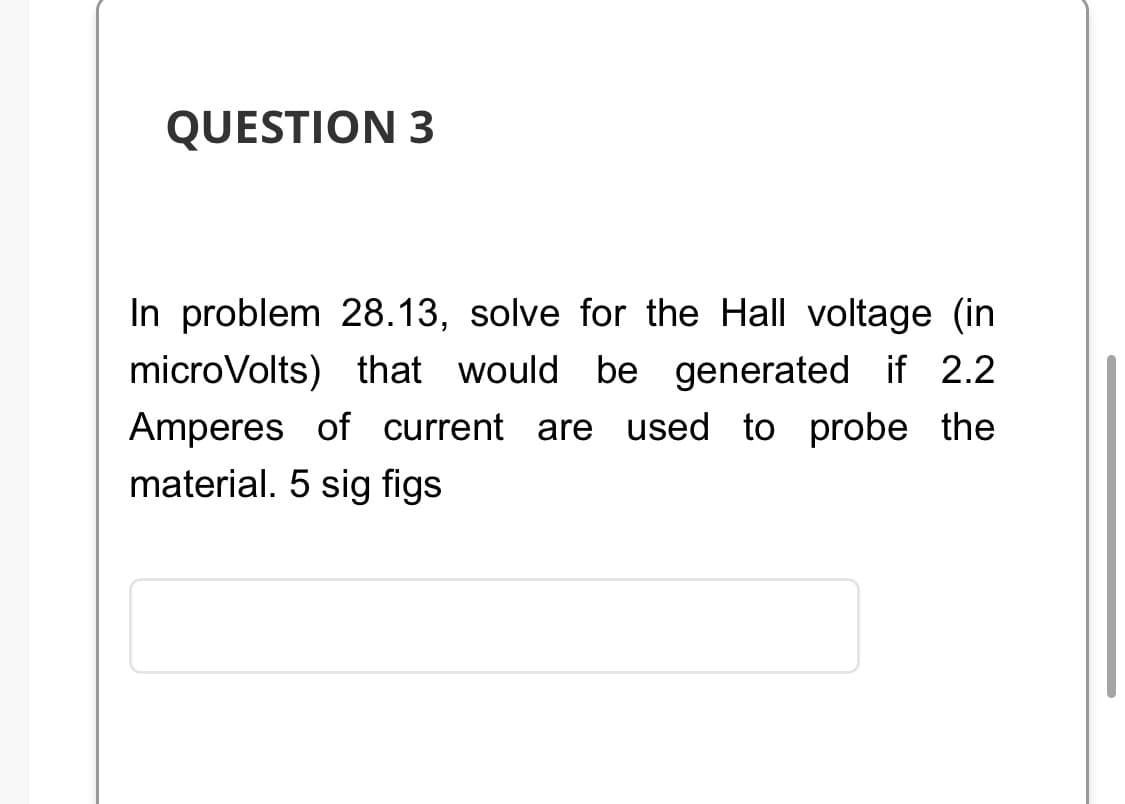problem 13, solve for the Hall voltage (in microVolts) that would be generated if 2.2 Amperes of current are used to probe the material. (5 sig fig
problem 13, solve for the Hall voltage (in microVolts) that would be generated if 2.2 Amperes of current are used to probe the material. (5 sig fig
Related questions
Question
In problem 13, solve for the Hall voltage (in microVolts) that would be generated if 2.2
Amperes of current are
used to probe the material. (5 sig figs)

Transcribed Image Text:Module 28-3 Crossed Fields: The Hall Effect
13 A strip of copper 150 μm thick and 4.5 mm wide is placed in
a uniform magnetic field B of magnitude 0.65 T, with B perpendi-
cular to the strip. A current i = 23 A is then sent through the strip
such that a Hall potential difference V appears across the width of
the strip. Calculate V. (The number of charge carriers per unit vol-
ume for copper is 8.47 × 10²8 electrons/m³.)

Transcribed Image Text:QUESTION 3
In problem 28.13, solve for the Hall voltage (in
microVolts) that would be generated if 2.2
Amperes of current are used to probe the
material. 5 sig figs
Expert Solution
This question has been solved!
Explore an expertly crafted, step-by-step solution for a thorough understanding of key concepts.
Step by step
Solved in 2 steps with 2 images
